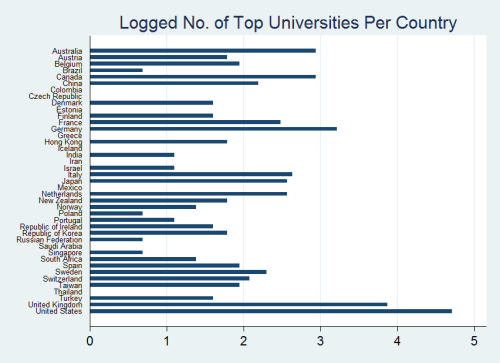Since my time serving as director of a PhD school I stumbled more and more into the issue of higher education. One problem that strikes me as odd is trying to convert university education into a business in adverse contexts. For instance, how do you make a living on students’ fees in a country like Hungary, where average purchasing power is not high? Moreover, and that’s the real issue I want to talk about, in such countries the average is pretty average: there is relatively little dispersion and hence income inequality is low. With little income inequality it is hard to recruit students from well-off families that would be willing and capable of paying high tuition fees.
This is why Thomas Piketty in his famous book is convinced that the increasing income inequality driven by top (wage) incomes in the US is correlated with increasing tuition fees of Ivy League universities. Both processes arguably feed each other: higher income inquality (and higher incomes it is fair to say) allow top universities to charge higher fees, and graduates afterwards need to earn more to justify higher investments. I wondered whether this argument also has some currency beyond the US. Specifically, it made me thinking what actually ‘explains’ how many highly ranked universities a country has.
As in one of my previous posts, I used the Times Higher Education ranking for the global top 400 universities.  shows the number of higher education institutions per country. I needed to log the numbers, since otherwise the US would be well off the chart. It is easy to see that large countries have more, though some tiny countries like Hong Kong or Singapore do perform, relatively speaking, very well. What’s more interesting is that Anglo-saxon countries are so dominant. Why?
shows the number of higher education institutions per country. I needed to log the numbers, since otherwise the US would be well off the chart. It is easy to see that large countries have more, though some tiny countries like Hong Kong or Singapore do perform, relatively speaking, very well. What’s more interesting is that Anglo-saxon countries are so dominant. Why?
Well there may be many reasons. I ran a little and very naïve regression, with very few observations, so it is clearly not a definite proof of what is going on. Nonetheless results are interesting. I use the logged number of institutions as dependent variable, and control for population size, economic prosperity (GDP per capita), spending on education (as % of GDP), and income inequality (measured as GINI coefficient by OECD). It is somewhat tedious to look at regression tables so I spare you the details. It suffices to say that population size and economic prosperity are both important explanatory factors. Spending on education is, by the way, negative which might imply that country spending more do spend more on mass education than top universities. More interesting to me is the relationship with income inequality.  shows the partial relationship between income inequality and the number of top universities. Indeed it is positive (and statistically significant, if not with the highest power of test one could imagine). Moreover the effect is sizeable, if the GINI coefficient increases by some 4% points (one standard deviation from the mean, or roughly from Germany to the UK) the number of top universities more than doubles. This means that if income inequality rises, so does the number of top universities!
shows the partial relationship between income inequality and the number of top universities. Indeed it is positive (and statistically significant, if not with the highest power of test one could imagine). Moreover the effect is sizeable, if the GINI coefficient increases by some 4% points (one standard deviation from the mean, or roughly from Germany to the UK) the number of top universities more than doubles. This means that if income inequality rises, so does the number of top universities!
Let me hasten to add that this is not a causal claim. You cannot simply increase inequality and get more or better (top) universities. But it might show the limits of building institutions for the elites, in countries that are anti-elitist. And once more, it shows the futility of using higher education rankings, if you want to know how good the average university in a country is. It rather seems that is hard for countries to have both many top universities and good mass education. But why does seemingly everyone nowadays automatically favour the former over the latter?
